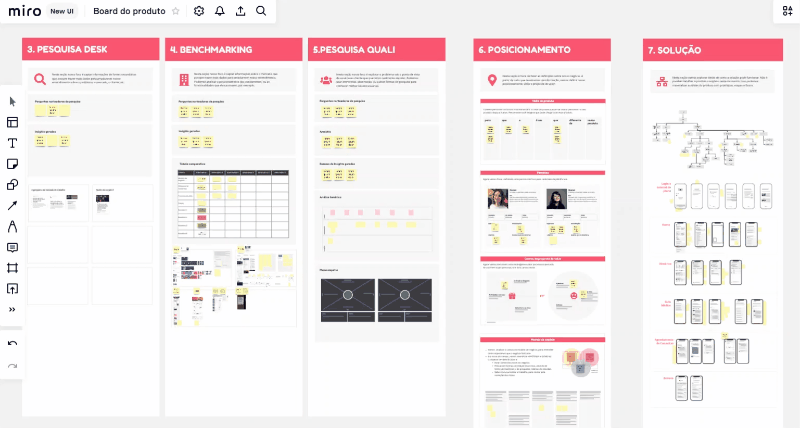
- Software Development
In the second article of the series on digital product teams, we will address the role of the Product Owner (PO) in the development journey. Our objective is to explain why it is important to have a person focused on product management, and the great impact of this work on the team’s results. To this end, we gathered the most frequently asked questions of our customers and talked to our experts.
Namely: in the first article of this series, which you can check out here, we broadly explore all the profiles, roles and knowledge needed in a product team. In addition to the Product Owner, in the next articles we will talk about the role of Designers, Developers and Testers.
When we work in the construction of a digital product, we are dealing with complexity. We start with (1) a vision of where we want to go (usually a little vague), (2) a handful of market information, (3) a certain idea of our customers’ needs, and (4) a limited budget and time. All of this in addition to the mission to deliver maximum value to customers and users.
Amid this complexity, you have to make countless daily decisions about what to do, how to do it and when to do it. The Product Person can then be seen as someone who understands the constraints of the business (money, time, legal, processes, etc.), and acts to prioritize the team’s work strategically, maximizing the value delivered.
Usually, the creators or sponsors of the business believe they can play this role. However, our experience and modern product development methods show that it is best to have someone specific on the team who masters the techniques in the area and has experience in digital products. This does not mean that the role of creators and sponsors is unnecessary: the Product Person will be in frequent touch with them, jointly co-creating the strategic vision – but will also carry out other activities that require more time and focus.
“We can say, from the experience of several cases we have seen, that without a good Product Person, there is a lot of wasted time and money. The allocated team builds a lot of software, but without connection to a larger strategy. In these cases, it is not uncommon to have to throw a lot of things away and start over from scratch, because what was built works, but it doesn’t meet the needs”, Karina Hartmann, Head of Product and Innovation, points out.
In the market, there are two main nomenclatures for the role of those who work with products: Product Owner (PO) and Product Manager (PM). In some companies, these roles are performed by the same person; in others, they are divided; and there are still those that have only the first role.
At SoftDesign, the Product Person takes on the responsibilities of Product Owner and Product Manager.
As a Product Manager, the main responsibilities are:
As Product Owner, which is a role of the Scrum method, the main responsibilities are:
From the list above, we can see that this is not simple work. To achieve this, it is necessary to understand the various stakeholders in the product and integrate their views into a cohesive strategy.
Bruna Ricardo, one of SoftDesign’s Product People, values this aspect a lot. For her, her main challenge in a digital product team is to strategically connect all the ends, considering the different objectives of each stakeholder. “The main challenge of my role is to move between different scenarios, connecting stakeholders: customer, development team, and end user. I need to bring everyone into the same world and make these people happy with what is being developed”, she says.
Moreover, for Daniel Olsson, who also works with products at SoftDesign, “the presence of the Product Owner is crucial because, while the company assumes the role of caring about the business, the PO focuses on the product, managing efforts to make it a success. We do this while verifying the user and the market, saving the entrepreneur’s time so that he can focus on strategic and administrative decisions”, he emphasizes.
Working on a team that uses the Scrum method, this person will have to perform the Product Owner’s functions, so in this person’s schedule we will find:
However, going beyond Scrum, the PO also needs to organize the following in his schedule:
Analysis of solution ideas, which usually includes the creation of workflows and prototypes, in addition to discussions with the entire team;

Product Person Artifacts. Source: Own image.
According to Marty Cagan, author of the best-selling book Inspired, the person needs to be very talented as well as smart, creative and persistent. After all, the work requires the ability to navigate from strategic to operational, bringing together business, design and technology. According to Michele Machado, who works with products at SoftDesign, a Product Owner needs to speak eye-to-eye with the stakeholders (discussing what is best for the business) as well as with the technical team (defining what is a priority and possible solutions).
To act in this role, it is not necessary to master the technical part, as would be the case with a person who has been a programmer, for example. In Cagan’s view, it needs to be someone who is curious about solutions and not afraid to participate in discussions about them. This means that technical people, without communication and negotiation skills, are a recipe for failure. “I think that just understanding about technology doesn’t make a product work; it is also necessary to connect ideas and people”, Bruna highlights.
In our work process, the profile we call Product Owner accumulates both the strategic vision (Product Management) and the day-to-day operational vision of Scrum. These people participate in the Product Conception and also in the life cycle of Software Development.
At SoftDesign, our main mission is to deliver products that will be used, loved and that generate value. If you need help structuring and validating ideas, understanding audiences and developing successful products, please contact us using the form below. Together, we will connect technology, design and strategy!
Experience having a reliable partner to your IT challenges. Let’s talk about our unique approach to discover and deliver outstanding solutions.


